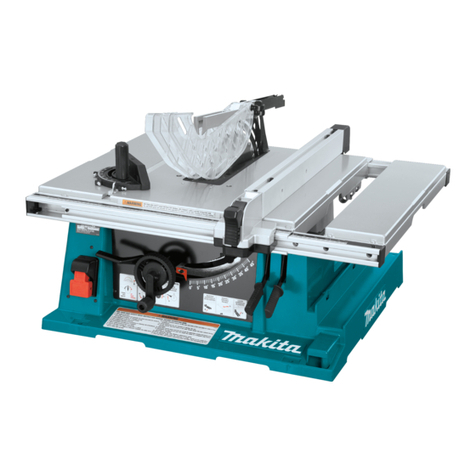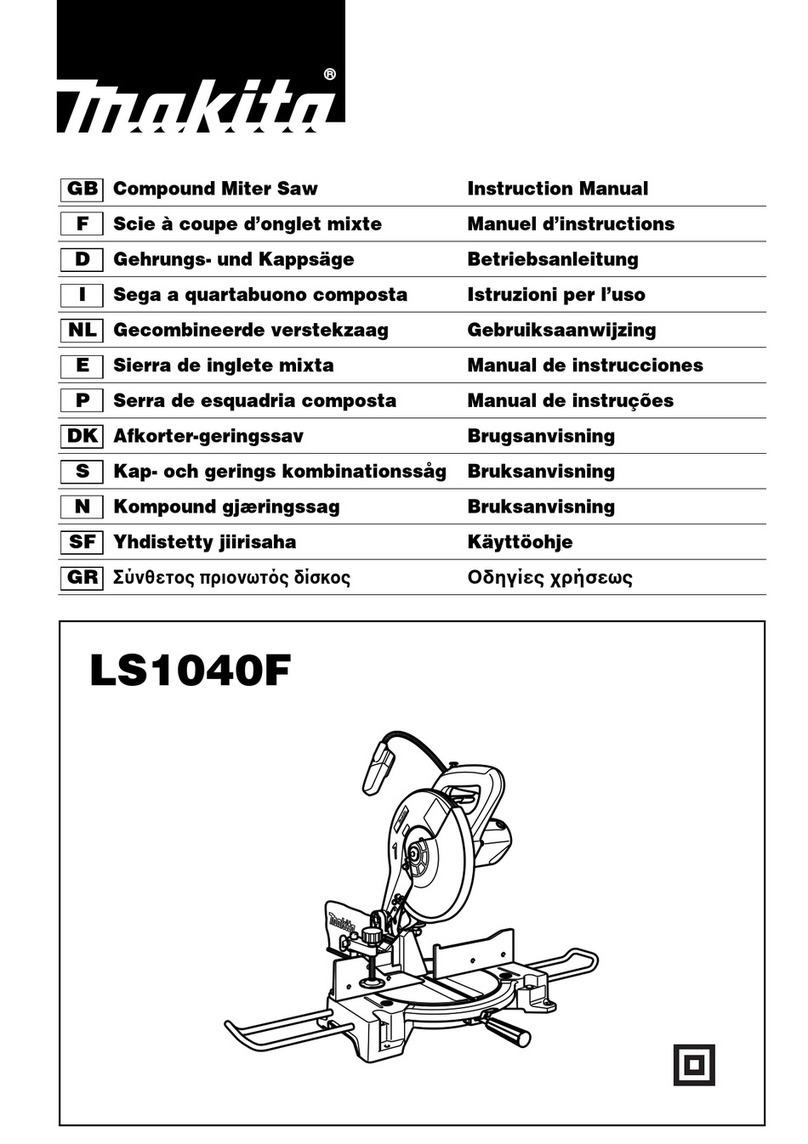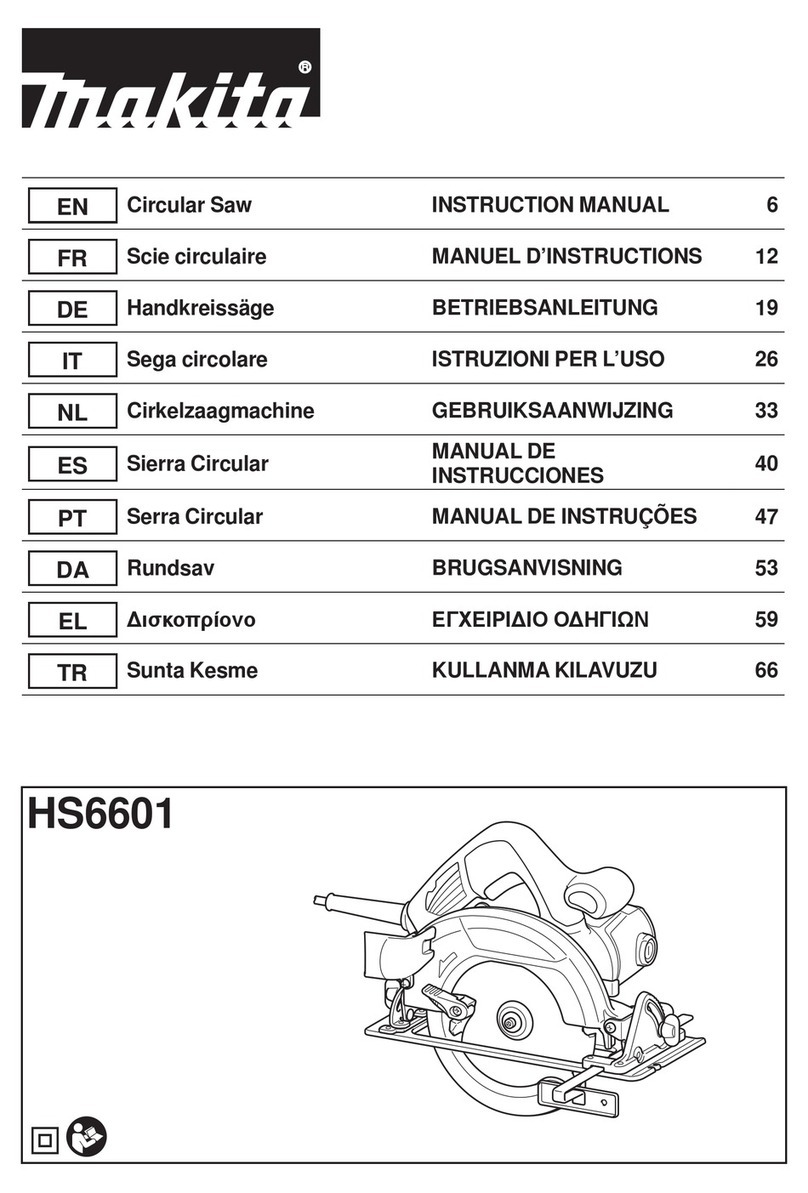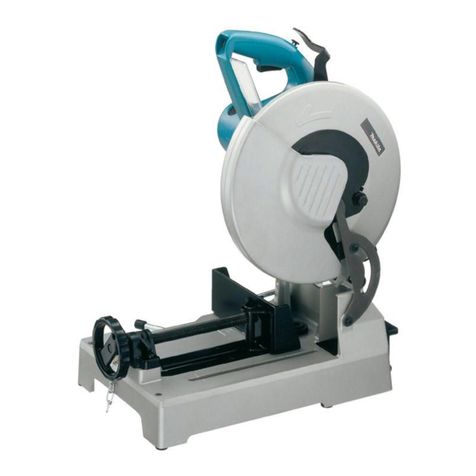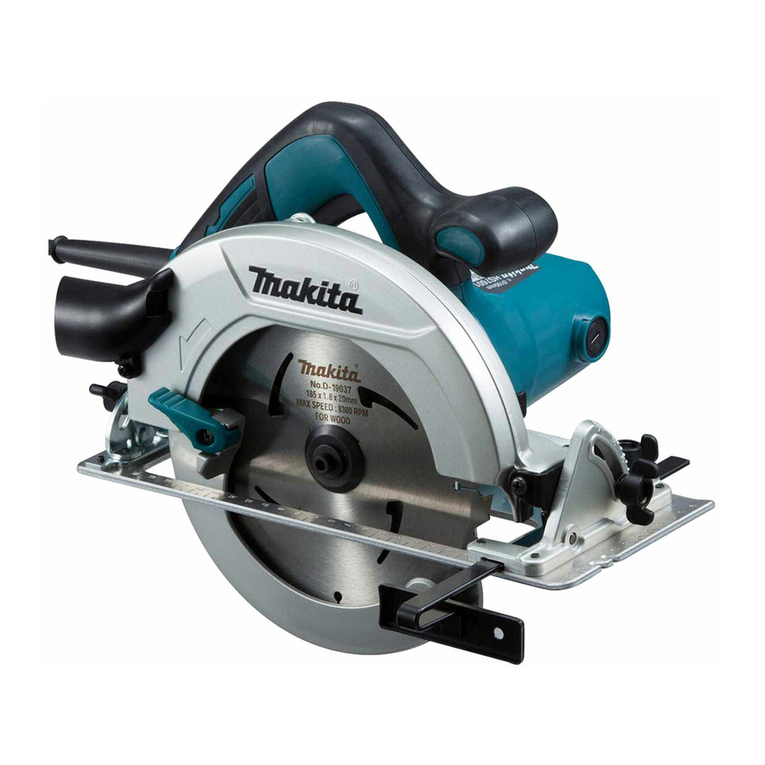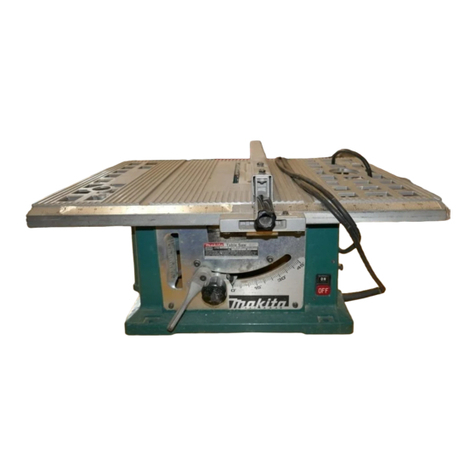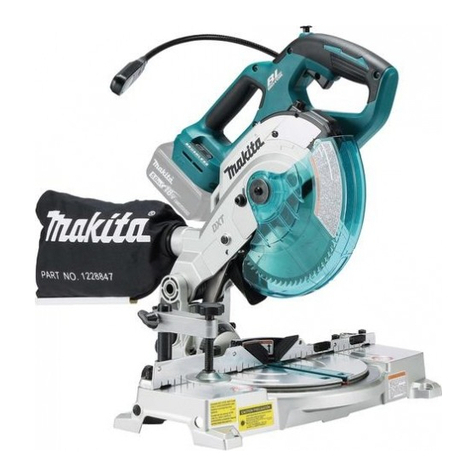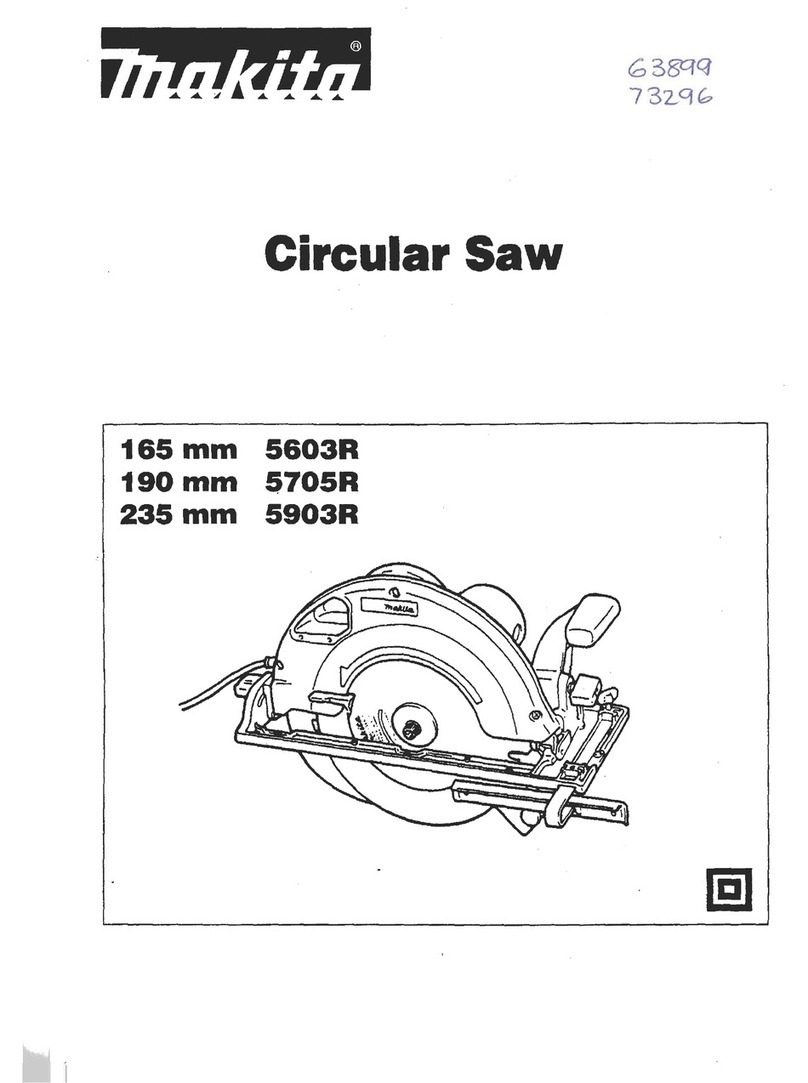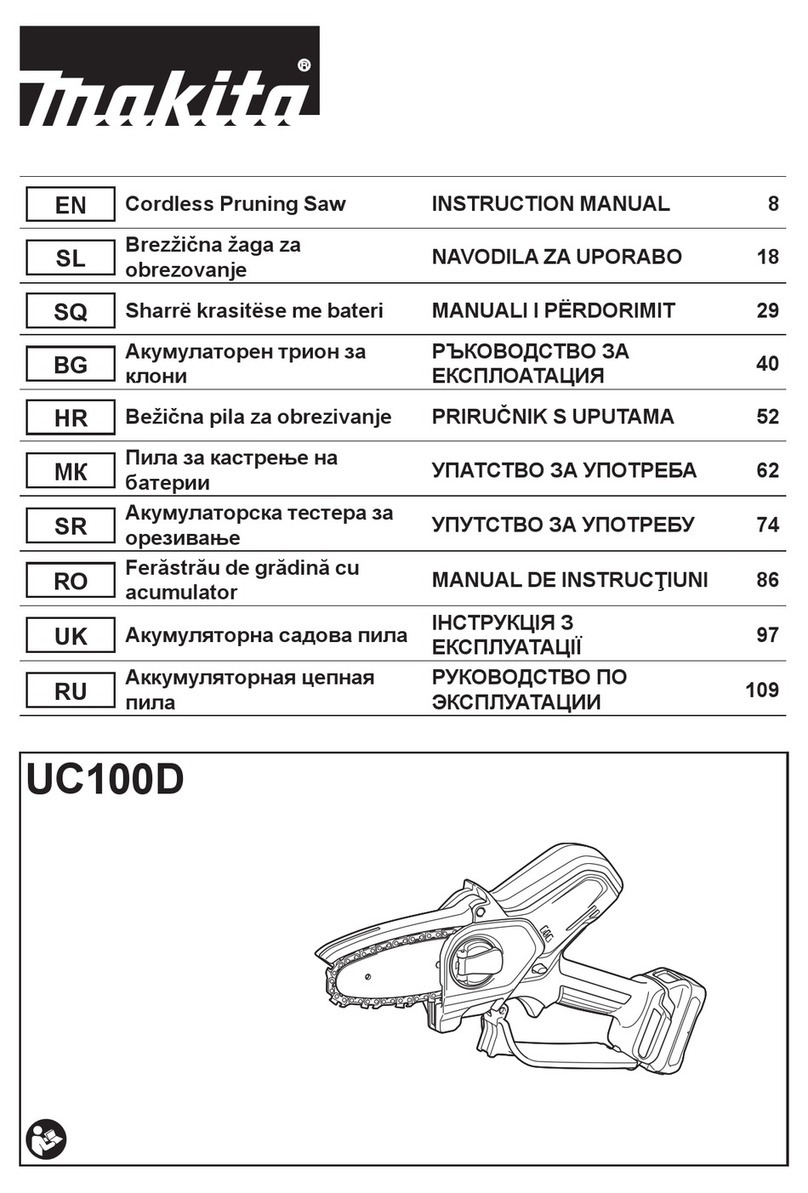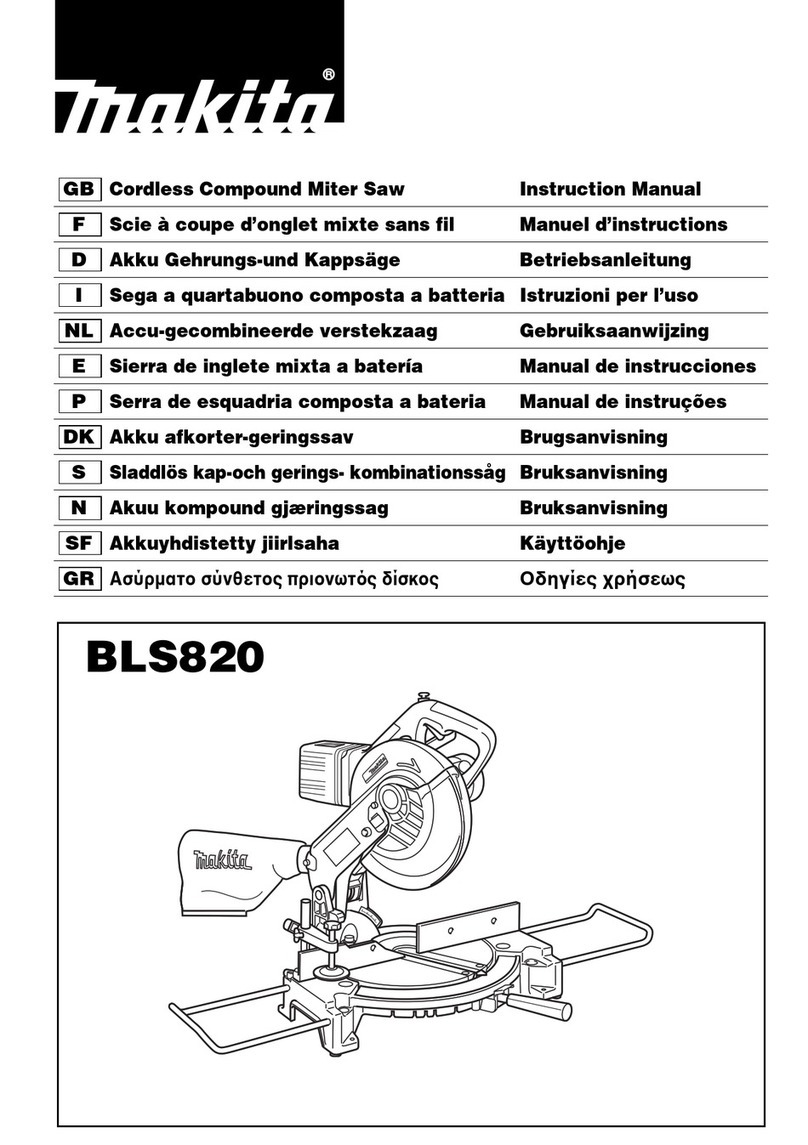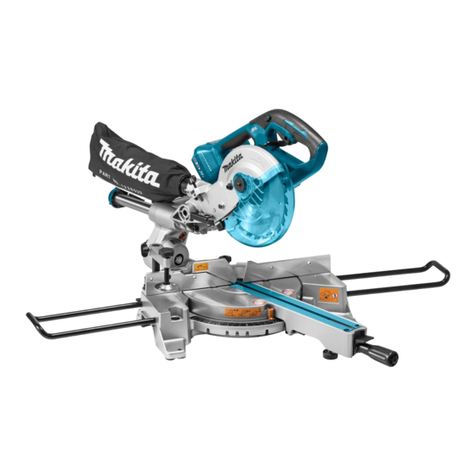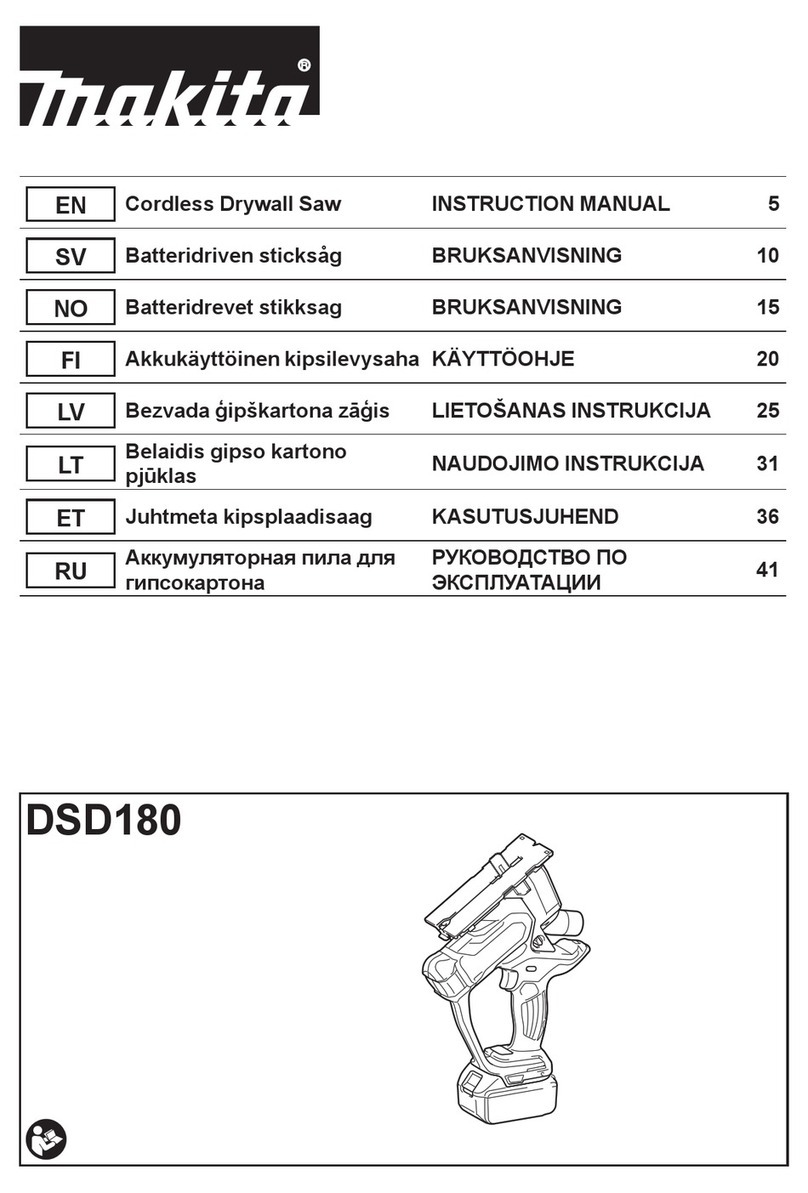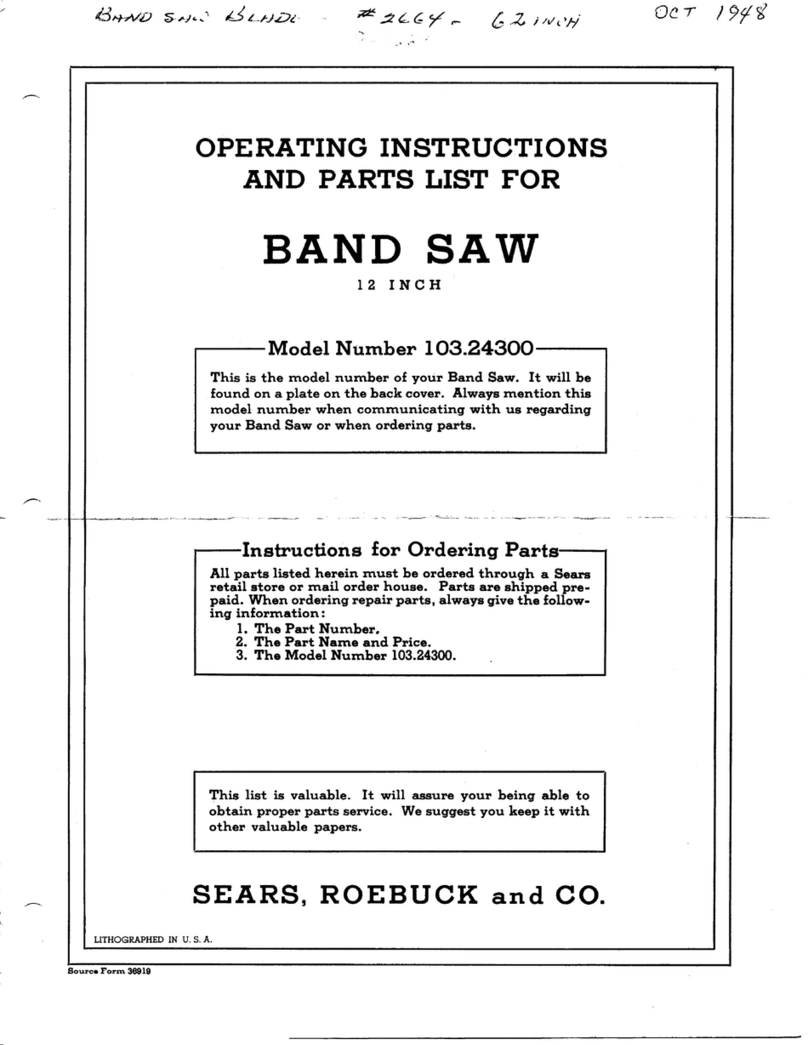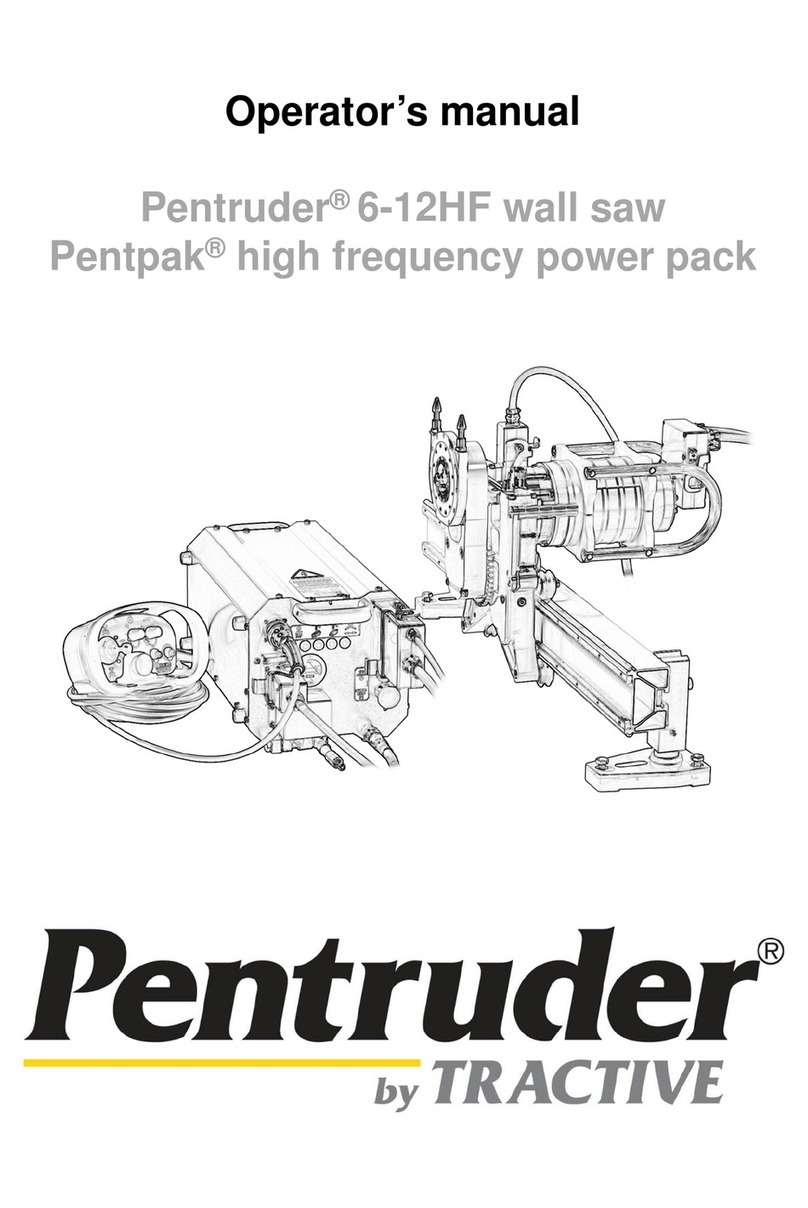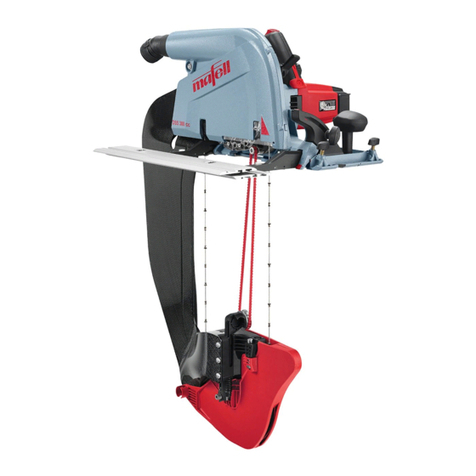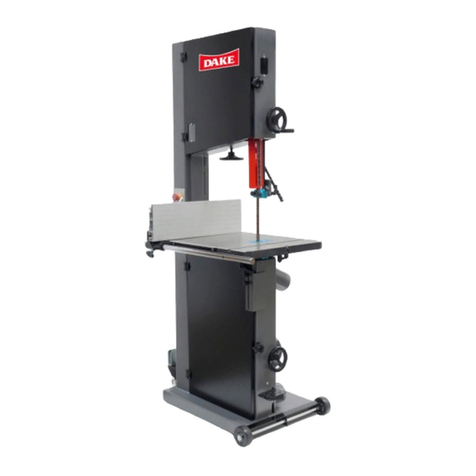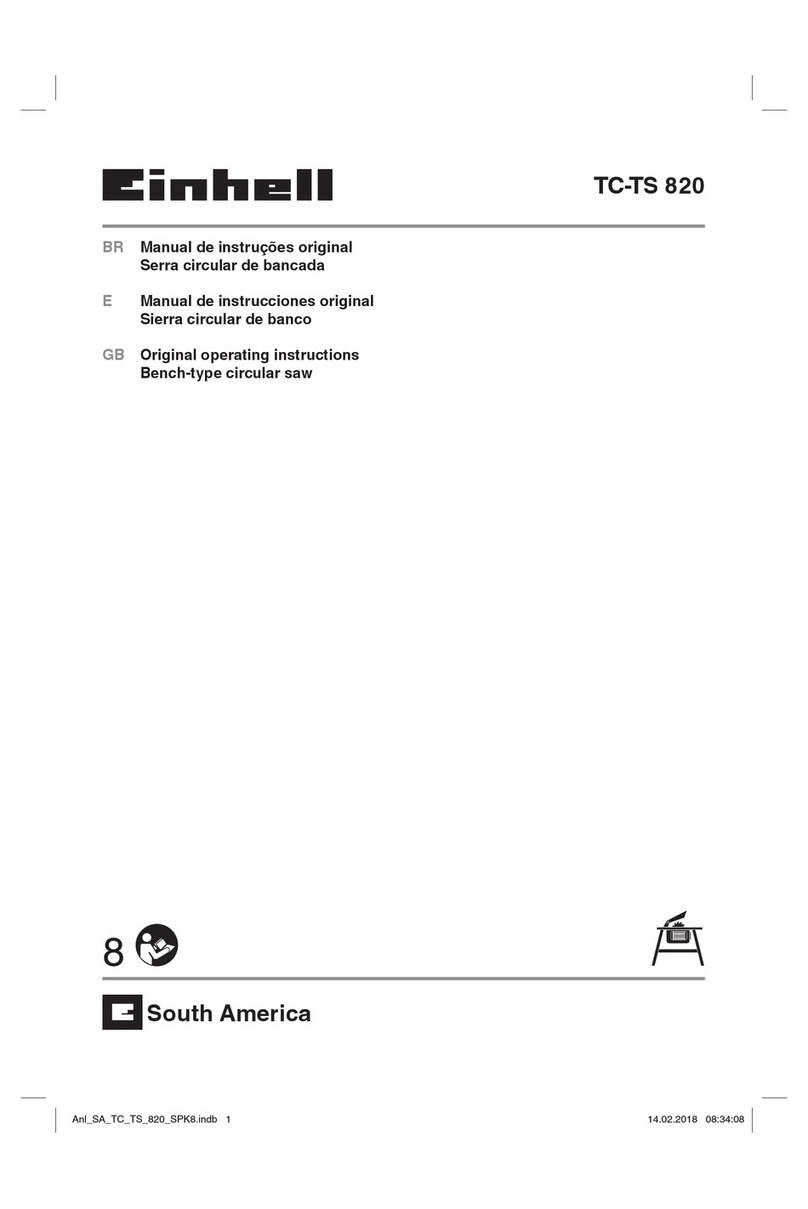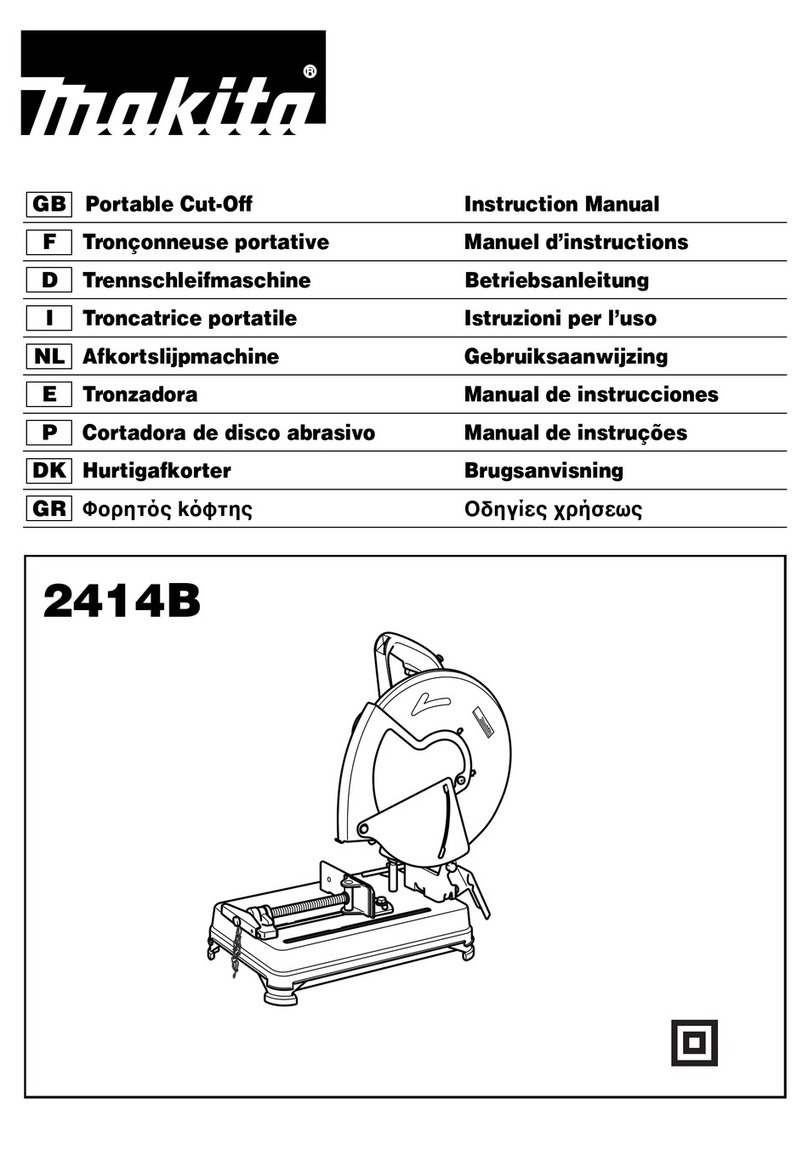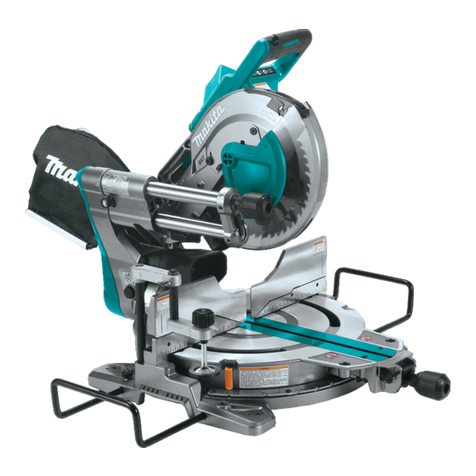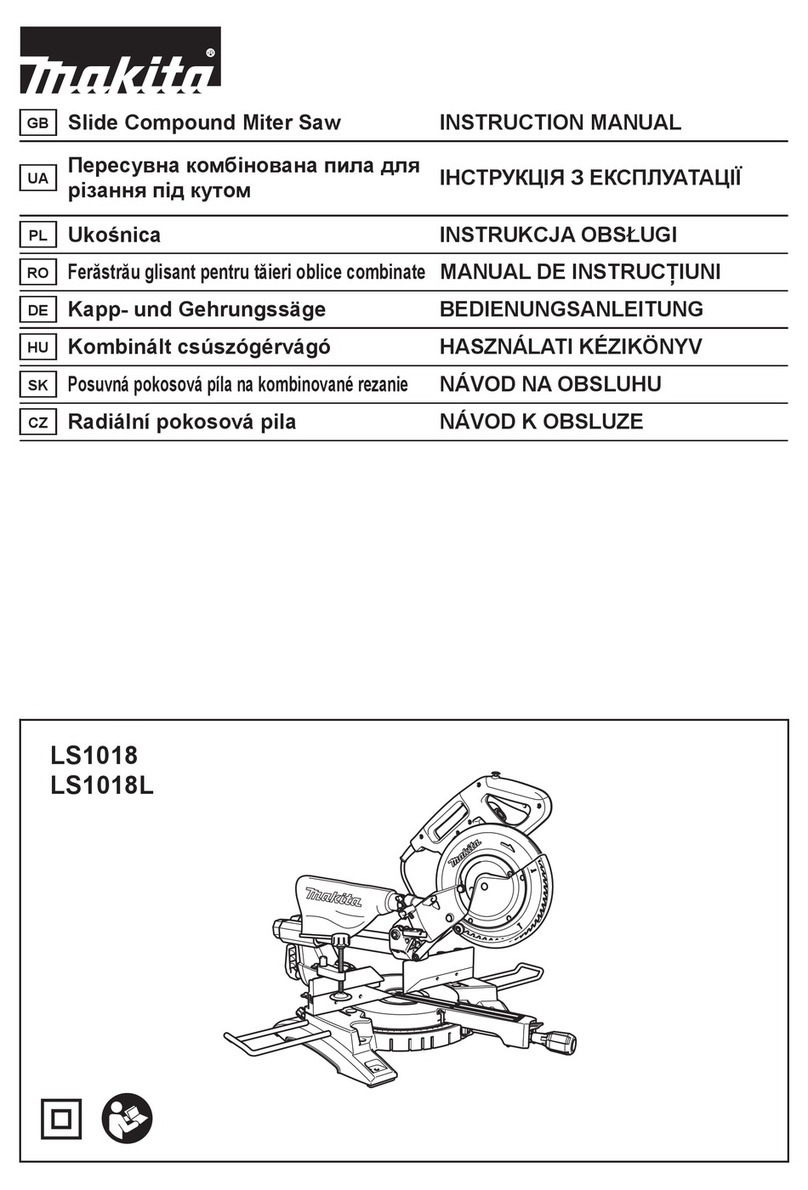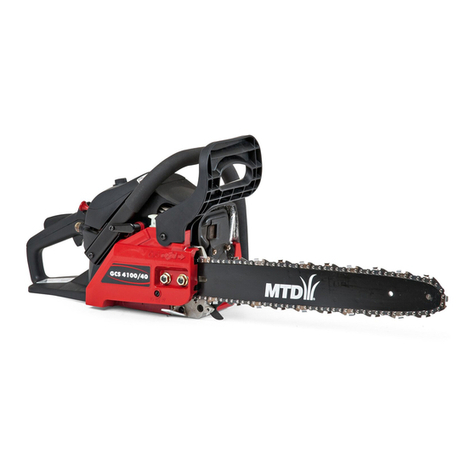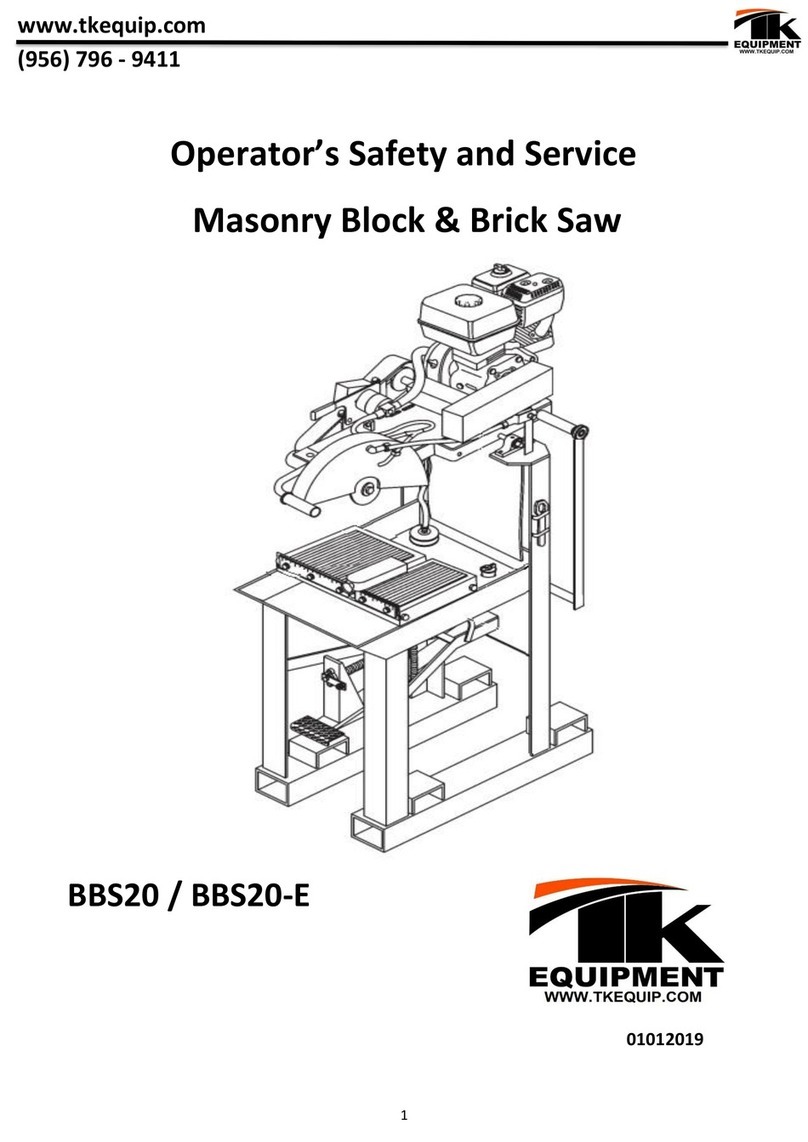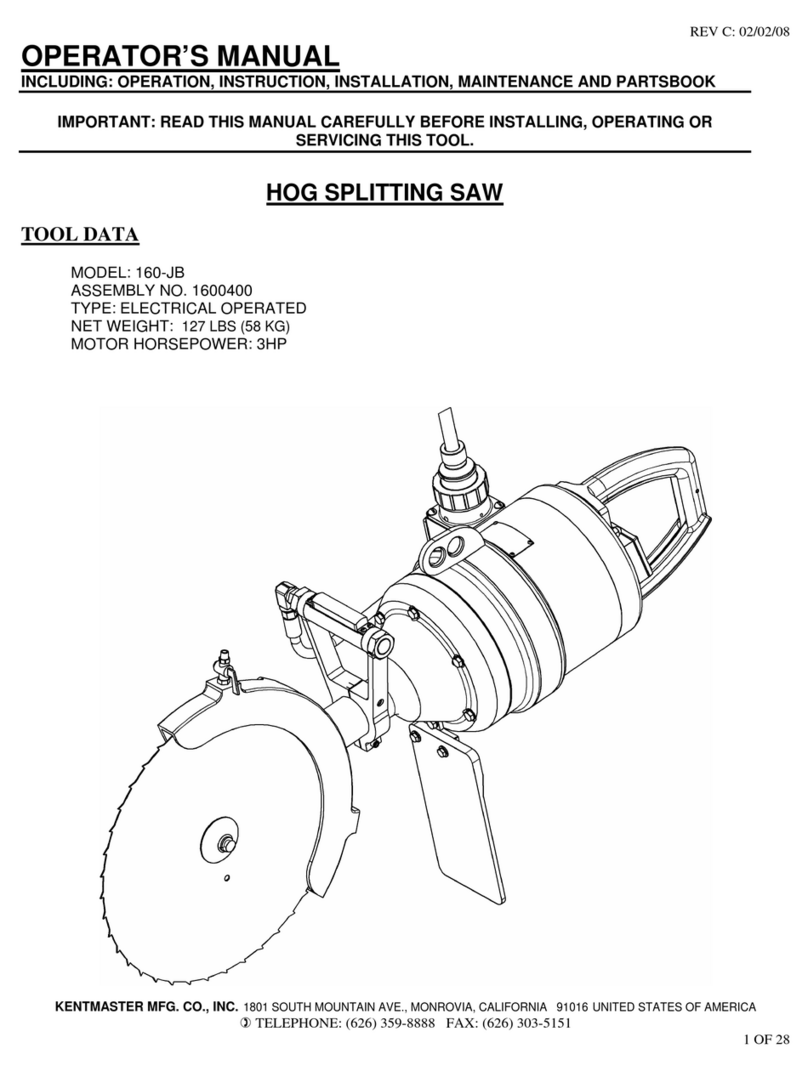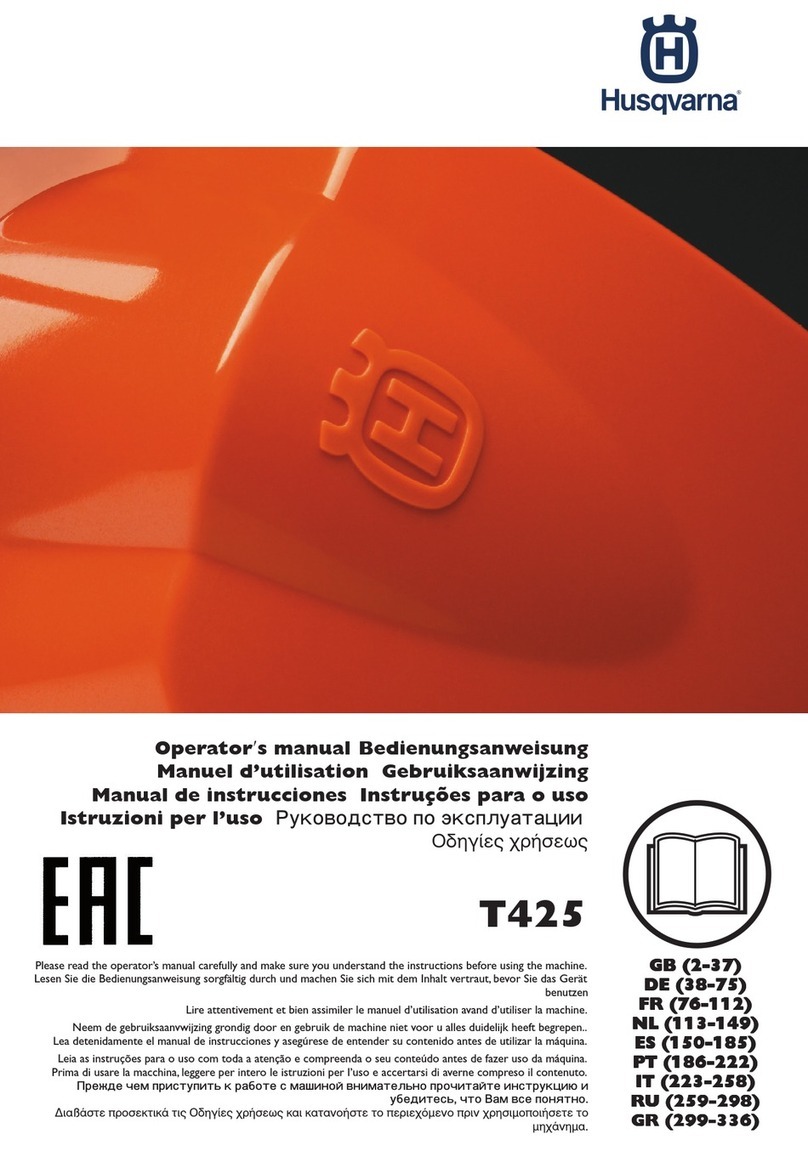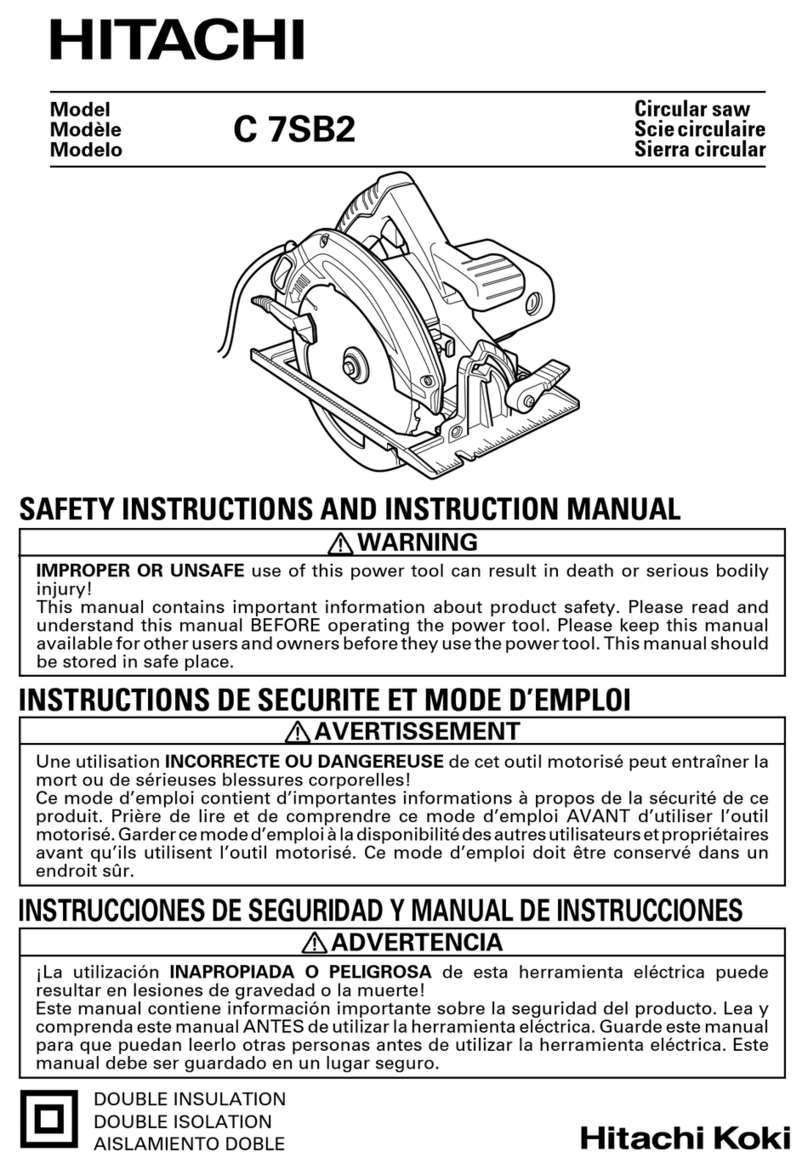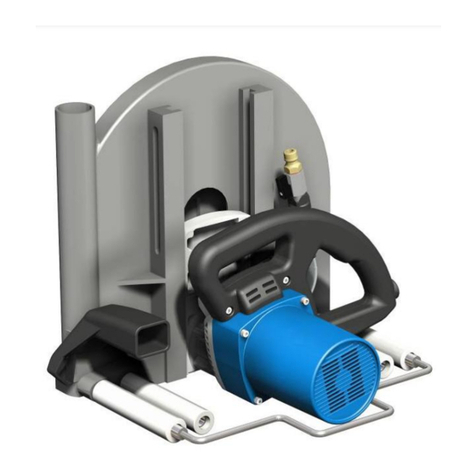
17 FRANÇAIS
13. NE VOUS ÉTIREZ PAS TROP. Assurez-vous
d’une bonne prise au sol et d’une bonne posi-
tion d’équilibre en tout temps.
14. PRENEZ SOIN DES OUTILS. Maintenez les
outils bien aiguisés et propres pour assurer un
fonctionnement sécuritaire et un rendement
optimal. Suivez les instructions de lubrica-
tion et de changement des accessoires.
15. DÉBRANCHEZ LES OUTILS avant tout travail
de réparation ou avant de changer les acces-
soires tels que lames, embouts, couteaux et
autres.
16. RÉDUISEZ LES RISQUES DE DÉMARRAGE
ACCIDENTEL. Assurez-vous que l’interrup-
teur est en position d’arrêt avant de brancher
l’outil.
17. UTILISEZ LES ACCESSOIRES
RECOMMANDÉS. Consultez le manuel de l’uti-
lisateur pour savoir quels sont les accessoires
recommandés. L’utilisation d’accessoires
non adéquats peut comporter un risque de
blessure.
18. NE VOUS APPUYEZ JAMAIS SUR L’OUTIL.
Vous courez un risque de blessure grave si
l’outil bascule ou si vous touchez accidentelle-
ment l’outil tranchant.
19. VÉRIFIEZ S’IL Y A DES PIÈCES
ENDOMMAGÉES. Avant d’utiliser l’outil, tout
protecteur ou dispositif endommagé doit être
vérié soigneusement an de s’assurer qu’il
fonctionne adéquatement et peut remplir la
fonction pour laquelle il est conçu. Vériez si
les pièces mobiles sont bien alignées et bien
xées, vériez la présence de pièces brisées,
vériez que l’outil est bien monté et assu-
rez-vous que rien ne peut entraver son bon
fonctionnement. Un protecteur ou tout autre
dispositif endommagé doit être adéquatement
réparé ou remplacé.
20. SENS D’ALIMENTATION. Vous devez faire
avancer la pièce à l’encontre de la lame ou de
l’outil tranchant, non la faire progresser dans
le même sens.
21. NE LAISSEZ JAMAIS SANS SURVEILLANCE
UN OUTIL EN MARCHE. COUPEZ LE
CONTACT. Attendez que l’outil se soit complè-
tement arrêté avant de le quitter.
22. PIÈCES DE RECHANGE Seules des pièces de
rechange identiques aux originales doivent
être utilisées lors des réparations.
23. FICHES POLARISÉES Pour réduire les risques
de décharge électrique, cet équipement est
muni d’une che polarisée (une des lames est
plus large que l’autre). Cette che ne peut être
insérée dans une prise polarisée que dans un
seul sens. Si la che ne s’insère pas à fond
dans la prise, insérez-la en sens inverse. Si
elle ne s’insère toujours pas à fond, contactez
un technicien qualié pour faire installer une
prise appropriée. N’apportez aucune modica-
tion à la che.
MISE EN GARDE RELATIVE À LA TENSION : Avant
de brancher l’outil sur une source d’alimentation
(prise ou autre dispositif), assurez-vous que la
tension du circuit correspond à celle qui est spéci-
ée sur la plaque signalétique de l’outil. L’utilisation
d’une source d’alimentation dont la tension est
supérieure à celle spéciée pour l’outil peut entraî-
ner une GRAVE BLESSURE et endommager l’outil.
En cas de doute, NE BRANCHEZ PAS L’OUTIL.
L’utilisation d’une source d’alimentation dont la ten-
sion est inférieure à la valeur indiquée sur la plaque
signalétique endommagera le moteur.
UTILISEZ UN CORDON PROLONGATEUR
ADÉQUAT. Assurez-vous que le cordon prolon-
gateur est en bon état. Lors de l’utilisation d’un
cordon prolongateur, utilisez sans faute un cordon
assez gros pour conduire le courant que le produit
nécessite. Un cordon trop petit provoquera une
baisse de tension de secteur, résultant en une
perte de puissance et une surchauffe. Le Tableau 1
indique la dimension appropriée de cordon selon
sa longueur et selon l’intensité nominale indiquée
sur la plaque signalétique. En cas de doute sur un
cordon donné, utilisez le cordon suivant. Plus le
numéro de gabarit indiqué est petit, plus le cordon
est gros.
Tableau 1 : Calibre minimum du cordon
Intensité nominale Volts Longueur totale du cordon en pieds
120 V 25 ft. 50 ft. 100 ft. 150 ft.
220 V - 240 V 50 ft. 100 ft. 200 ft. 300 ft.
Plus de Pas plus de Calibre américain des ls
06–18 16 16 14
610 18 16 14 12
10 12 16 16 14 12
12 16 14 12 Non recommandé
Règles de sécurité supplémentaires
NE vous laissez PAS tromper (au l d’une utilisation
répétée) par un sentiment d’aisance et de familiarité
avec le produit, en négligeant le respect rigoureux
des consignes de sécurité qui accompagnent la scie
à onglets. L’utilisation non sécuritaire ou incorrecte
de cet outil comporte un risque de blessure grave.
1. Portez un protecteur pour la vue.
2. Maintenez les mains hors de la ligne de coupe
de la lame de scie. Évitez tout contact avec
la lame lorsqu’elle continue de tourner après
la mise hors tension de l’outil. Elle peut alors
quand même causer de graves blessures.




















